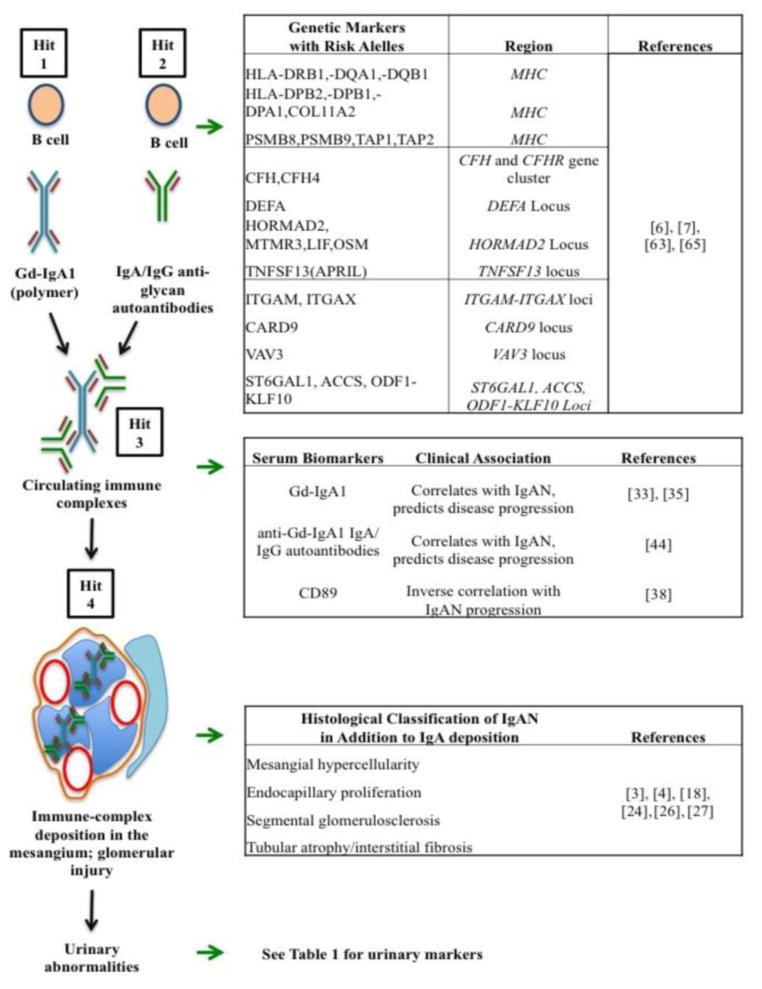Figure 1.
Summary of biomarkers related to the progression of IgAN (based on a multi-hit pathogenesis scheme of IgAN [66]). The scheme shows the hypothesis of IgAN, wherein multiple conditions (hits) are required for disease development. “Hit 1” is elevated levels of circulating Gd-IgA1, which is a necessary but not sufficient condition for disease development. The second hit, “Hit 2” is production of autoantibodies (IgG/IgA isotype) that recognize Gd-IgA1. “Hit 3” describes formation of circulating immune complexes from Gd-IgA1 and the corresponding autoantibodies. “Hit 4” is driven by the deposition of these Gd-IgA-containing pathogenic immune complexes in the mesangium and mesangial-cell activation inciting glomerular injury. Corresponding to each part of the multi-hit hypothesis is a list of IgAN-associated markers.

